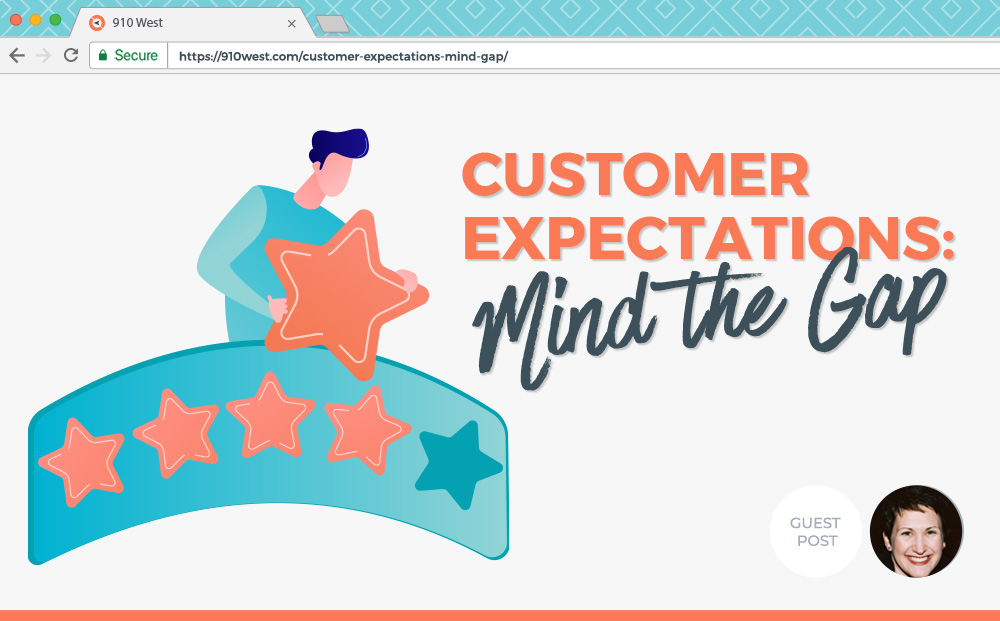No one likes being disappointed, but that’s what happens when our expectations aren’t met. As consumers, when there’s a gap between what we expect from a purchase and what we get (and often relative to the price), we won’t buy again or recommend others and sometimes will dissuade friends from making our same “mistake.” When the gap is wide and disappointment extreme, we may write a bad review on Yelp, post a snarky comment on Facebook, or call out a company on Twitter.
As service providers–and we are all in the services business–we have to be hyper-aware of the customer expectations our prospective clients come to the table (or store or SERP or website) with. Because we are selling a solution to a given problem, deep understanding of the issue–as defined by the client–and how our services respond is a foundation of our business.
Clear communication about these subjects is central to expectations management. Also, because the experience of interacting with our product or service (and us!) factors into whether customer expectations are met, we need to consider how we might be shaping expectations (even unknowingly) and to develop content to temper, mediate, or encourage certain expectations. Unless we can accurately understand and influence buyers’ conceptualizations of the experience promised, convey to them what that experience entails in terms of process and results, and deliver an exact or better experience, we risk falling into the expectations gap–thereby alienating customers and tarnishing our reputation.
Unhappy clients are expensive, bad for business, and no fun. This is why exploring the expectations you want to meet and the target market who has them is critical. You can start by understanding who your “A” clients are and paying attention to how you are screening and scoring your leads. Here are some other pointers to help you avoid falling into the expectations gap:
- Be sure your marketing messages match your customers’ experiences.
- Develop the core processes in services delivery to ensure satisfaction (and efficiency) plus differentiate you from others.
- Make everyone in the organization responsible for managing expectations. Ensure company leadership is in agreement about the ideal client and the desired experience and that the culture is aligned accordingly.
- Ask better questions, ask more questions, and listen carefully. Don’t shy away from probing in order to understand what the real expectations are, especially if you are a new business owner and are providing an intangible (as with consulting advice or coaching) or conceptual (as with advertising campaigns or WordPress website wireframes) and/or custom outcome.
- Create the tools and processes to capture and manage expectations. This might include a “learning log” of “red flags.” Use this information brainstorm how to exceed customer expectations.
- Be willing to walk away when expectations are unreasonable or unachievable for any reason to avoid having to fire your clients.
Join the conversation! What other pointers do you have for expectations management based on your experiences?
Today’s blog post is written by guest and collaborator, Tracy Diziere, President of TDZ Creative Partners. About herself, Tracy says:
I’m a strategic marketing consultant, marketing communications professional, and all-around happy person. I enjoy providing clarity, direction, and focus to small business owners and entrepreneurs based on my almost 20 years in B2B professional services and technology marketing.
Contact Tracy tracy@tracydiziere.com.


Melissa Morrison liked this on Facebook.
RT @910west: Customer Expectations: Mind the Gap: No one likes being disappointed, but that’s what happens… http://t.co/tckepUAKk9
Tracy Diziere & Associates LLC liked this on Facebook.
Tracy Diziere & Associates LLC liked this on Facebook.
Pingback: Our Position on Collaborating with Agencies
Pingback: Small Agency Solutions